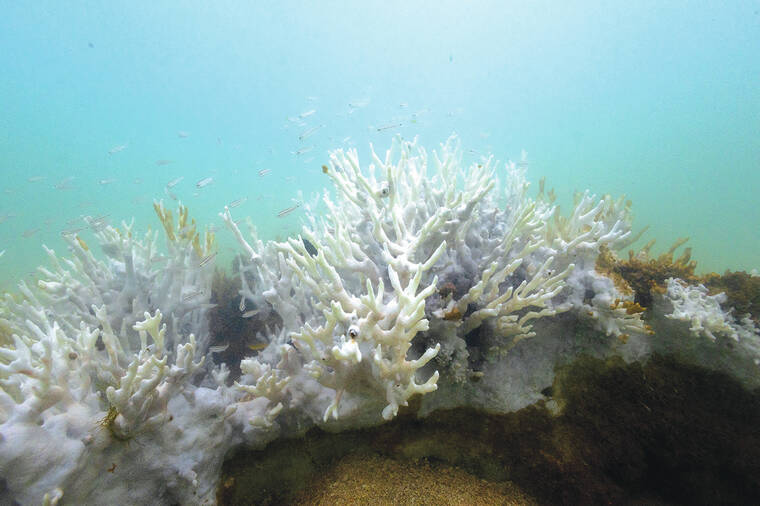NOAA: 60 percent of world’s coral reefs may have bleached in past year
Nearly two-thirds of the world’s coral reefs have been subjected to heat stress bad enough to trigger bleaching over the past year, the leading agency monitoring coral reefs said on Thursday.
The U.S. National Oceanic and Atmospheric Administration (NOAA) announced last month that the world’s coral reefs were in the throes of a fourth mass bleaching event, as climate change combined with an El Nino climate pattern has pushed ocean temperatures to record highs.
Now, the agency reports some 60.5 percent of the world’s reef area has been affected and that number is still rising.
“I am very worried about the state of the world’s coral reefs,” NOAA’s Coral Reef Watch coordinator Derek Manzello said in a monthly briefing. “We are seeing (ocean temperatures) play out right now that are very extreme in nature”.
Triggered by heat stress, coral bleaching occurs when corals expel the colourful algae living in their tissues. Without these helpful algae, the corals become pale and are vulnerable to starvation and disease.
Scientists have documented mass bleaching in at least 62 countries and territories, with India and Sri Lanka recently reporting impacts.
The last global event, which ran from 2014 to 2017, saw 56.1 percent of reef areas subjected to bleaching-level heat stress. Previous events in 1998 and 2010 hit 20 percent and 35 percent of reef area, respectively.
While the current event has affected a greater swath, Manzello said the 2014-17 event is still considered the worst on record due its severity and persistence. But 2023-24 could soon surpass it, he added.
Caribbean corals
Corals in the Atlantic Ocean have been hit hardest by soaring ocean temperatures, with 99.7 percent of the basin’s reefs subjected to bleaching-level heat stress in the past year, NOAA said.
“The Atlantic Ocean has been off the charts,” Manzello said.
One assessment published in April 2024 found there had so far been between 50 percent and 93 percent coral mortality at Huatulco, Oaxaca, in the Mexican Pacific.
The situation is likely to worsen this summer, as heat stress is once again accumulating in the Southern Caribbean. In some areas, the heat stress threshold for bleaching to occur has already been passed.
“This is alarming because this has never happened so early in the year before,” Manzello said.
Scientists are expecting further bleaching in the Southern Caribbean, around Florida, and at the Mesoamerican Barrier Reef — the world’s second largest reef — this summer.
“El Nino is dissipating, but the ocean is still anomalously hot. It won’t take much additional warming to push temperatures past the bleaching threshold,” he said.



